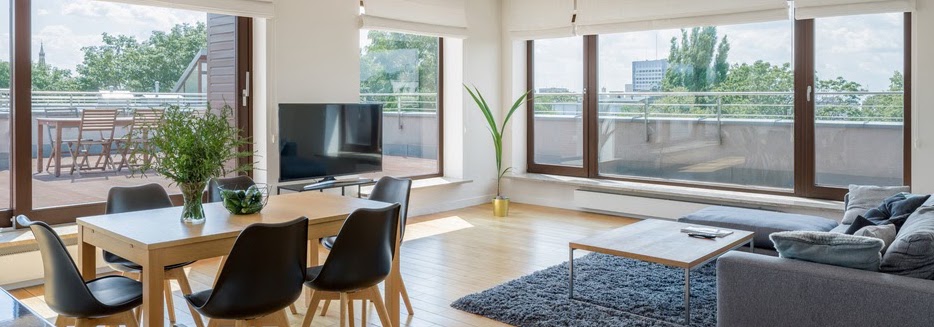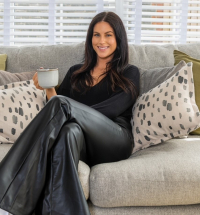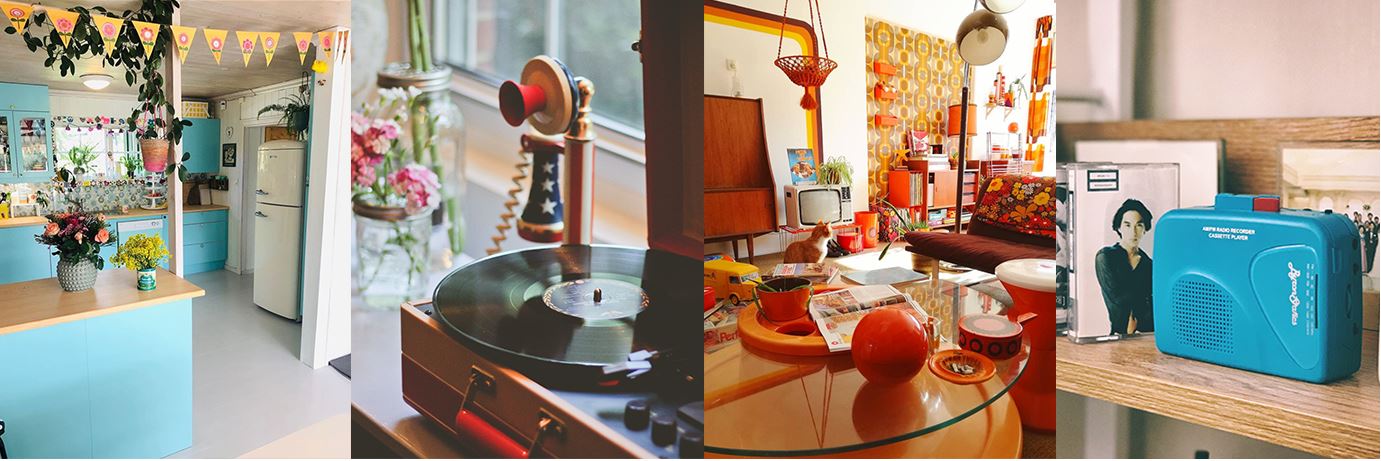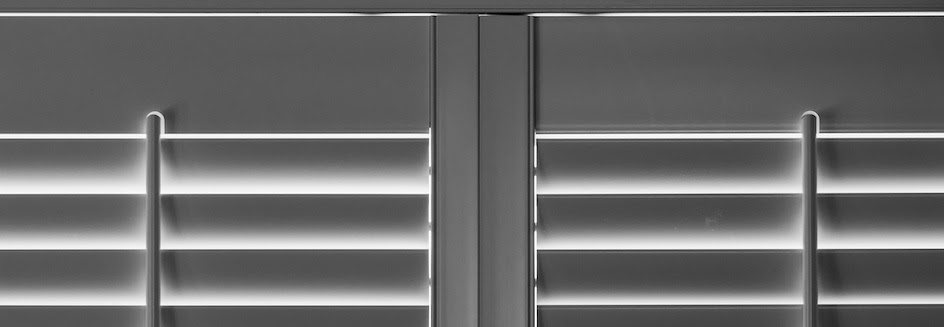Whether your gorgeous flat needs a facelift or you just signed the lease on your dream office space, you need the perfect window coverings to match your own, unique style. But with so many window treatments to choose from — blinds, shades, draperies, oh my — where do you begin your search?
If your pulse escalates at the seemingly endless design options in front you, sit tight. We're about to peel back the curtains, and shine a little light on the various window coverings you can select for your home or office space.
11 Window Coverings for Every Design Aesthetic
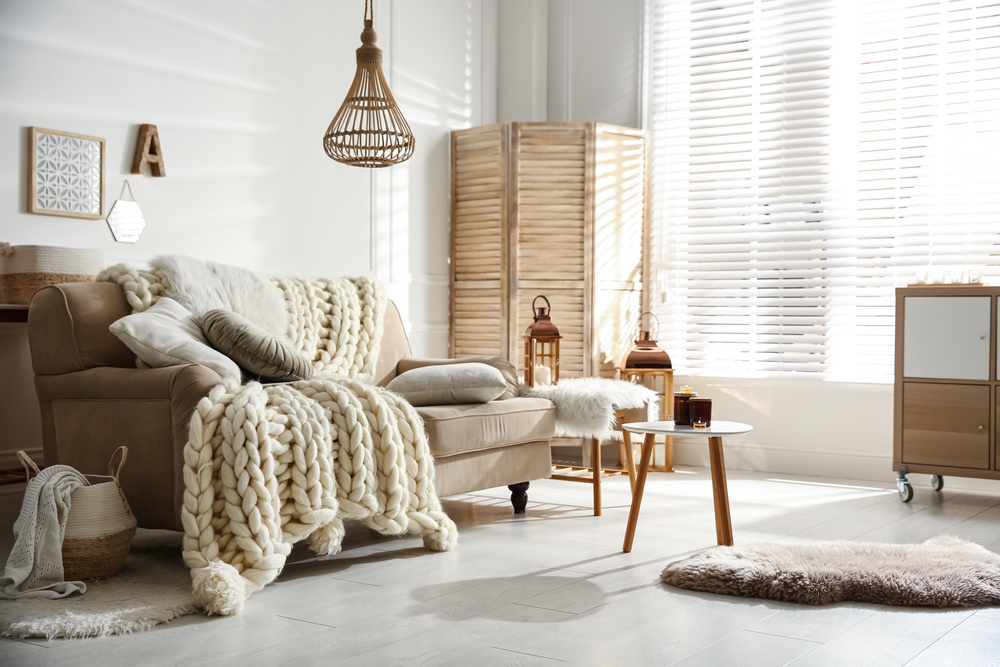
The treatment you choose for your window ultimately depends on the functionality, style and light control you need. Below, we dive into the most popular window covering options to consider for your home.
1. Roman Blinds
Roman blinds, or roman shades, offer the relaxed, pleated look you expect from draperies or valances, with the structure of a simple blind. This pull-down blind option includes gorgeous fabrics that drape over themselves when raised, giving a cosy feel to any home. To lower the blinds, you'll simply pull on a cord in a single, continuous loop to block out light. Because of its even split between design and function, roman blinds are popular treatments for a kitchen or home office.
2. Blackout Curtains
Ah, blackout curtains — the must-have window treatment for any light sleeper. To outfit your bedroom for a sound night of Zzzs, consider purchasing blackout curtains. Blackout drapes are typically made with double-layered, tightly woven fabric to help keep light at bay. Another option growing in popularity is blackout blinds — which are roller blinds that use non-transparent fabric to control light. Blackout blinds offer an advantage over curtains as they can be controlled with a motorised mechanism, so you can raise or lower them without getting out of bed.
3. Shutter Blinds
Shutter blinds, also known as plantation shutters or interior shutters, are wooden shutters fitted with slats. Shutter blinds work similarly to an exterior shutter, opening as though you would a closed door, then lifting the slats to increase light exposure. Popular at the turn of the 20th century, shutter blinds have recently come back into style, and lend a modern, clean look to a sitting room or living room.
Note: Since this option comes with an entire frame — not just a shade — it's typically a more expensive covering, but the sturdiness and aesthetic is well worth the investment.
4. Faux Wood Blinds
When people read the term ‘faux’, they often assume it means a decline in quality. But when it comes to faux wood blinds, this couldn't be further from the truth. High-quality faux wood blinds are typically a type of venetian blind fitted with a wooden grain. They last just as long (or longer!) than real wood blinds, plus they're water-resistant so they won't warp or crack when exposed to moisture (such as within bathroom windows). Lastly, they're much easier to clean than real wood, making this a suitable option for family homes.
5. Venetian Blinds
Venetian blinds, or horizontal blinds, are — quite arguably — the most popular form of window treatments on the market. Horizontal blinds have been around since the 1700s, and remain popular due to their never-faltering style, function and durability. Typically, venetian blinds come with two sets of cords, allowing you to tilt or pull up the window coverings to let natural light in. They offer excellent light filtration (blocking out roughly 95% of light), come in a variety of styles and cover most glass windows.
6. Vertical Blinds
Vertical blinds, unlike horizontal blinds, are a type of blind that hang straight up and down, with slats opening left to right. Vertical blinds offer one distinct advantage over other types of blinds in that they can cover a very large-width window. So, if you're looking for a window covering for a bay window, sliding glass doors or french doors in your dining room, a vertical blind may be the best option for your space.
7. Pleated Shades
Pleated shades, or pleated blinds, are a type of blind that come as one, continuous piece of fabric. When extended, a pleated shade looks similar to a curtain panel pulled taught. When pushed up, the pinch pleats fold in on themselves so they're nearly hidden — thereby exposing your gorgeous view. One popular form of pleated shades is the honeycomb cellular shade — it offers six cells of cloth to increase light filtering. These cordless window shades are easy to move and offer high durability, making them a suitable option for nearly every room in your home.
8. Pull-Down Blinds
If you have children or pets, a pull-down blind may be the best option for your home. With pull-down blinds, you simply tug on a center tab to pull the window blind from the top-down to close the shade. Since there are no cords or chains, this option is incredibly easy to use, and comes in a variety of styles. You can choose from roller shades, roman shades, wooden blinds and pleated blinds.
9. Woven Wood Shades
Woven wood shades, or bamboo blinds, are a great way to incorporate a wooden, rustic feel into your home. Made from sustainable bamboo, this is an eco-conscious choice to help block out those UV rays. If you're into a farmhouse or boho-chic interior design aesthetic, this may be an excellent choice for your living room or kitchen windows.
10. Thermal Blinds
Thermal roman blinds are a type of blind that comes fitted with incredibly dense fabrics. Not only does this help filter light, but thermal blinds help reduce heating and cooling costs for your home. These energy-saving window treatments help trap heat to keep your home cosy in the winter, and block heat outside to keep it cool in the summer. If you’re looking to reduce energy costs or live in an older home, this might be the perfect option for you.
11. Sheer Curtains
If you like an extra layer of privacy, but want to get plenty of natural light in your home, you might consider using sheer white curtains. Sheer curtains are a type of window treatment that offer next to zero light filtration, but help prevent your neighbours from peeking in your windows. You'll string the sheer fabric up on a curtain rod, using grommets to hold the curtains in place. If you're looking for a treatment for a four seasons room or conservatory, this may be an excellent option for you.

